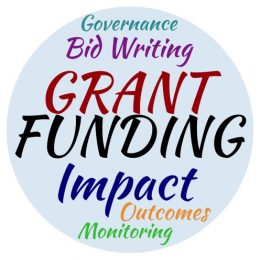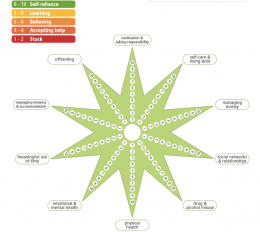 Understanding outcomes will help you not only to be successful with your grant applications but also in how you monitor the funded project during and after the funding period.
Understanding outcomes will help you not only to be successful with your grant applications but also in how you monitor the funded project during and after the funding period.
Monitoring the use of funds
 Some monitoring required by funders is very light touch; others can be very rigorous and will require significant time. Big Lottery funding (Reaching Communities) and ESF (European Social Funding) are examples of funders with quite stringent requirements for reporting. They expect you to budget in some regular admin hours to enable the grant finances and activity to be monitored effectively.
Some monitoring required by funders is very light touch; others can be very rigorous and will require significant time. Big Lottery funding (Reaching Communities) and ESF (European Social Funding) are examples of funders with quite stringent requirements for reporting. They expect you to budget in some regular admin hours to enable the grant finances and activity to be monitored effectively.
Outcomes – What you are planning to do and what difference do you want to make?
There are two main types of outcomes you can record and monitor to ensure your funded project is achieving what it is supposed to:
- Hard Outcomes (sometime also called outputs) are easily recordable and measurable eg
– registers for the numbers of people attending an event or group activity
– someone getting a job – full time / part time
– becoming a volunteer
– starting a training course/gaining a qualification
– reducing medication
– items purchased/money spent. - Soft Outcomes – these are often more subjective and often relate to long term change eg
– improvements to self-esteem, confidence, emotional resilience
– mental health
– reduction in loneliness & isolation
– engagement with community
– hope for future etc.
Applications for capital funding, need to include monitoring that relates to the funds being spent as well as the impact that the project will have on the community.
No funder is going to invest in refurbishing a village hall, if it is going to be left unused or is not making a difference to anyone’s life.
Milestones…
…are often asked for in relation to larger or longer projects or capital funding applications. These are stages that the project will have reached after a certain amount of time. They demonstrate that the project is planned and achievable, and enable both you and the funder to monitor that a longer project is on track.
 Measuring the difference you are actually making
Measuring the difference you are actually making
Make sure you get the process in place to measure your agreed outcomes at the start of the programme, otherwise you will be playing catch up at the end of the grant and the process will become a time-consuming chore, rather than a useful self-evaluation and development exercise.
Accepted methods of demonstrating evidence of change (soft outcomes) can come from
– feedback forms
– anecdotal evidence
– case studies – which are always well-liked and frequently requested by funders
– quotes re the difference made
– pictures of an activity, especially that feature people!
F or a more structured way of measuring soft outcomes, consider using on an Outcomes Star which can be tailored to measure relevant outcomes and can be used under license. A star (or similar self-produced measuring device) can be used as part of an initial assessment to find a base figure, then used at a midway point in a programme and again at the end – great for showing distance travelled towards agreed goals or anticipated outcomes in a longer programme.
or a more structured way of measuring soft outcomes, consider using on an Outcomes Star which can be tailored to measure relevant outcomes and can be used under license. A star (or similar self-produced measuring device) can be used as part of an initial assessment to find a base figure, then used at a midway point in a programme and again at the end – great for showing distance travelled towards agreed goals or anticipated outcomes in a longer programme.
Getting your monitoring returns completed well and submitted on time will help to build a good reputation and may open the door to further funding.
